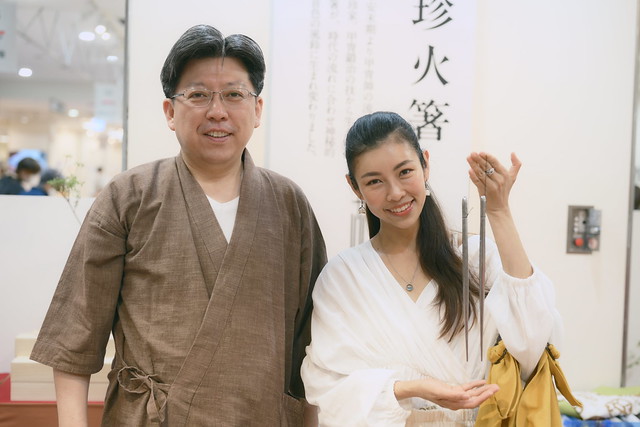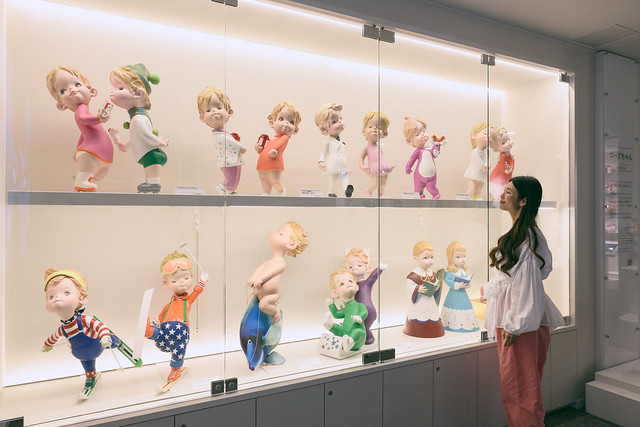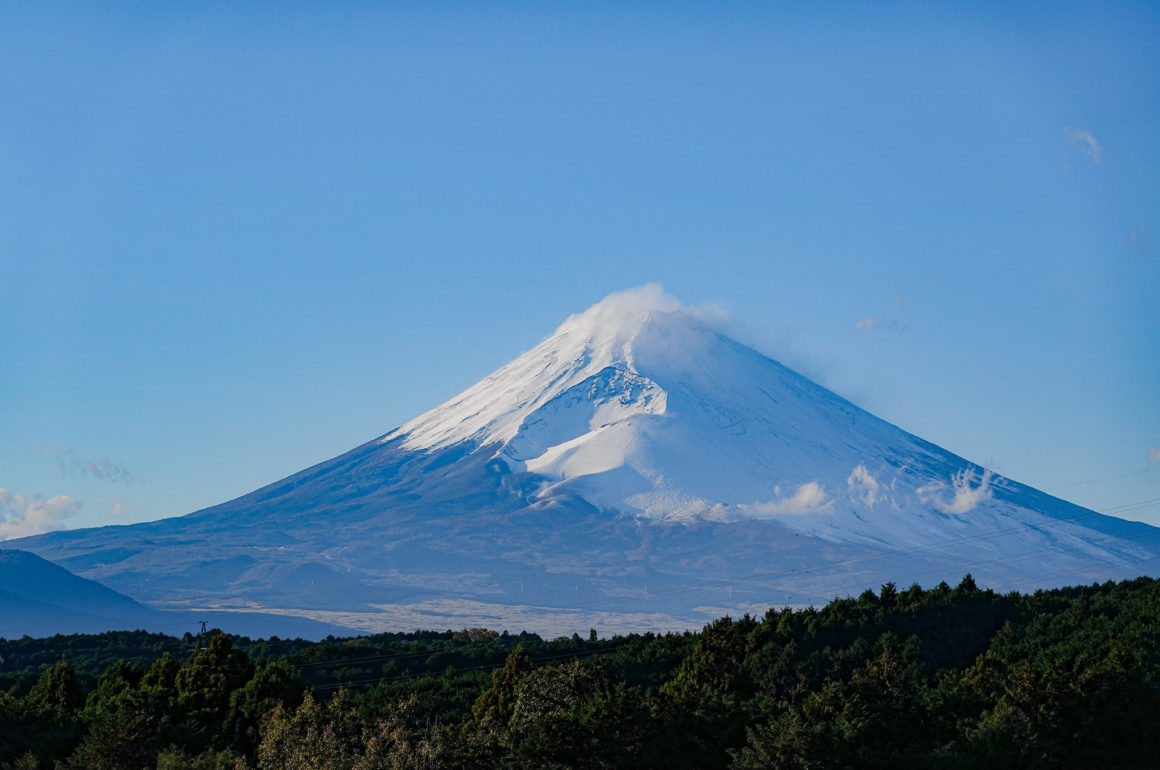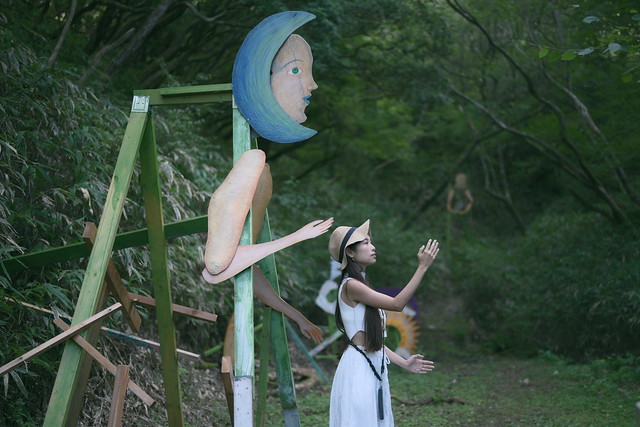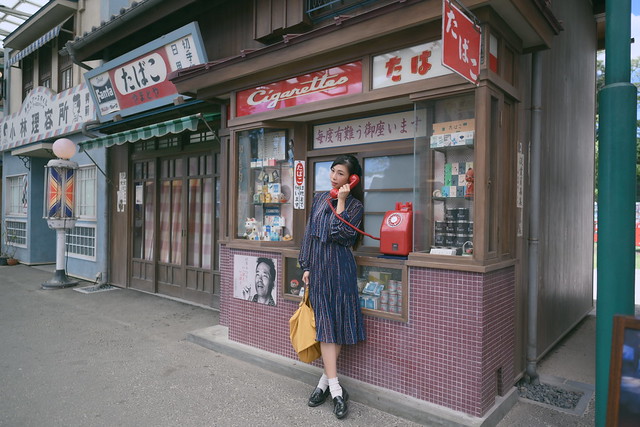Kagawa was my 44th prefecture.

I had a short day-trip to Takamatsu, the capital city of Kagawa prefecture during my JR WEST trip, and one day was obviously not enough to fill even an edamame-size of my bottomless desire and curiosity to leave no stone in Japan unturned. It had just left me craving for more.
I was lucky because on my way to conquer my final last two prefectures during my recent Shikoku trip, Kagawa was on the list, and this time was Takamatsu again.
I would have loved to (and I will) explore other parts of the Udon Prefecture (that’s what Kagawa is lovingly nick-named by the Japanese, for obvious reason!), such as Shodoshima (小豆島) sitting on the Seto Inland Sea which prides itself as the birthplace of olive cultivation in Japan (and being hopelessly biased and everything made-in-Japan-obsessed, I have always wanted to hunt for made-in-Japan olive oil), and of course Naoshima, which you have probably seen photos of the signature dotted pumpkin by Yayoi Kusama all over Instagram explore pages.
But I was glad to go back to Takamatsu twice, in January, then in June. Technically it was the first prefecture I re-visited after conquering my last – Kochi.
Guess what? The trip has ended my worries about the emptiness after the completion of a life mission. After all, it was a LIFE MISSON. And I have just checked it off my life, y’all. What am I going to do with my life now??
But revisiting the city made me certain about setting a new goal – the #188PrefectureMission – 47 prefectures X 4 seasons.
Yes, that’s me. Welcome to my cult, for the 48th time. 🙂
This post is a combined narrative of both my journeys in winter and summer.
HOW TO GO
Kagawa is one of the four prefectures of Shikoku Island, and the smallest of all (yet I’m writing an ass-long blog post on just its capital city). And it is actually the most easily accessible prefecture of all four too, connected by Setouchi Grand bridge to Japan’s main island. The nearest prefecture to access from would be Okayama.
You can read about my JR West trips here:
If you are traveling with young kids who love Anpanman characters,, they might wanna take a ride on the JR Anpanman Train. Just don’t let them An-Punch anyone on the train lolol.

This series of red-bean-bun-themed trains is a tribute to its creator Yanase Takashi, although he was born in Kochi prefecture, so I’m not sure they they made the trains run in Kagawa haha. That’s also very Japan lol.

Anpanman Ekiben!!

I will have to come back with cheesiepetit for this.
SIGHTSEEING
Ritsurin Garden (栗林公園)

One of the prized gems in Takamatsu City is none other than Ritsurin Garden, which has been given the highest rating of 3 stars by the France’s Michelin Green Guide in Japan, so it’s a surprise Ritsurin is not any more well known that other Japanese garden counterparts. It is still one of my favorite, having visited twice although unintentionally.
Winter

One way to enjoy the most out of this 400-year-old garden built over a span of 100 years is to go on a traditional Japanese boat and cruise slowly along the pond.

Touring by the boat also gives you an exclusive perspective of the park different from that of walking – as you get to see many different landscape from a different angle.

I am always in awe at the sheer amount of effort needed to maintain a landscape garden this massive. I love the craftmanship of Japanese shokunin T___T.
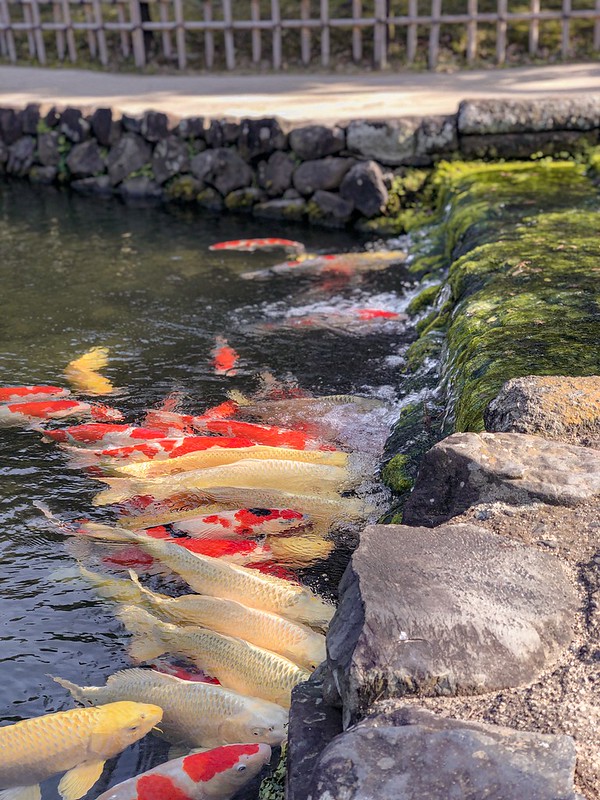
Beautiful koi pond.

Not many flowers were in season, but I spotted a lone plum blossom.

At the spot where you can take in the most and best of the garden!
Summer

Same spot, different season. Surprisingly they are not that different haha.

This is Natasha. Most of the photos of this trip is taken by her!

In summer it is all green, as for winter too – because most of the landscape is made of pine trees – as much as over 1000 specimens, which is why the garden looks luscious green all year round.
I was told that autumn is beautiful too, with a large amount of maple trees and of course, no garden will be complete without cherry blossom, so yes. I will have to come back here two more times.

This was my favorite photo of Ritsurin Garden. If you follow me on IG, I also uploaded a short video of it (try #cheesieinKagawa), it looks just like this. It was a magical sight.


The garden is 185-acre-wide, honestly I don’t even know how large it is. However many Tokyo Dome that is. Still no clue. But it is massive.


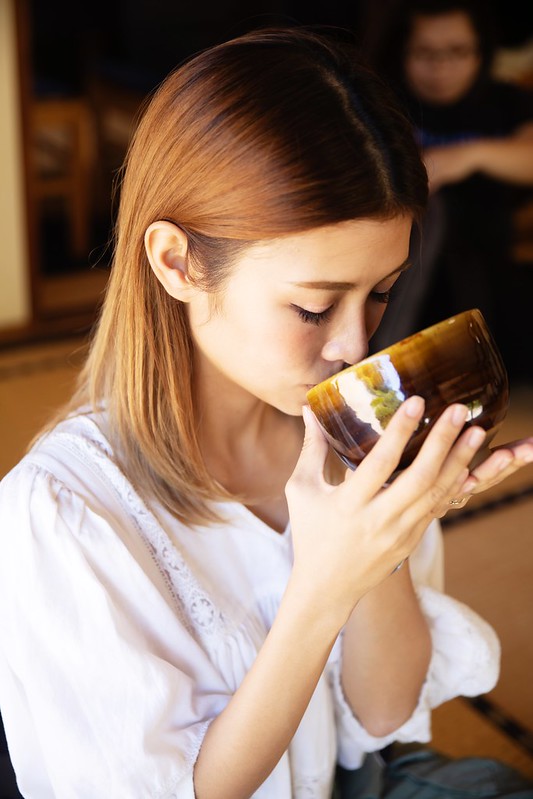
Take your time to wander around (but I suspect you may get lost somewhere but then again that’s also the fun part), have a tea-sipping serene moment at the teahouse, looking at wasen boats passing by.

With reservation, you could even enjoy a porridge breakfast after yoga time (yes we did yoga here!).
Red Lighthouse at Sunport
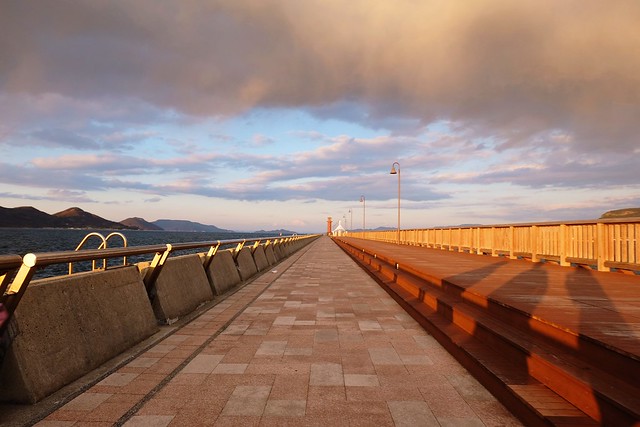
I was brought to see many different light houses all over Japan, but here’s the first in the world – a red lighthouse made entire out of glass.

So when the sun gets off work, you will see the entire lighthouse lit up in bright red.

The port is a place you can enjoy some quiet time at. You may also spot an ojisan or two fishing by the port.

And find random art installations. So very Kagawa. Any guesses what this is supposed to represent?

And enjoy a really beautiful sunset. But not nearly as beautiful as what I’m going to share next.
Yashima Nightview
Most. Beautiful. Sunset. View. Of. My. Life.
At least one of.

I have seen the sparkling Seto Inland Sea many times from many different spots.
From passing along the Seto Grand Bridge in the train over from honshu via Okayama city, and by car via Awaji Island, Hyogo Prefecture. From a Seto Grand Bridge cruise departing from Kojima, Okayama prefecture. From the top of Mt Misen at Miyajima, and from the very surreal Mirai Shin No Oka in Onomichi, Hiroshima prefecture. Also from the unmanned train station Shimonada in Matsuyama, Ehime prefecture. So you may say that I have seen it all around.
And I was convinced that the Seto Inland Sea is indeed, extraordinarily, mesmerizingly beautiful all the time. It is the magical, sparkling sea for sure.
It is more so if you come and take a panoramic look at it from up at Yashima (屋島, literally “roof island”), a flat-top mountain in Takamatsu.
We took a Night View Bus Tour up the mountain, and it was almost sunset. I couldn’t stop myself from snapping videos and photos from the bus window, but when I got off the bus, I went oh…mai…god… at what I saw before my eyes…

And our bus driver told us that to get to the best view point, you need about 3-5 minutes walk, and the sun was almost gone.
So I ran. And ran and ran and ran.
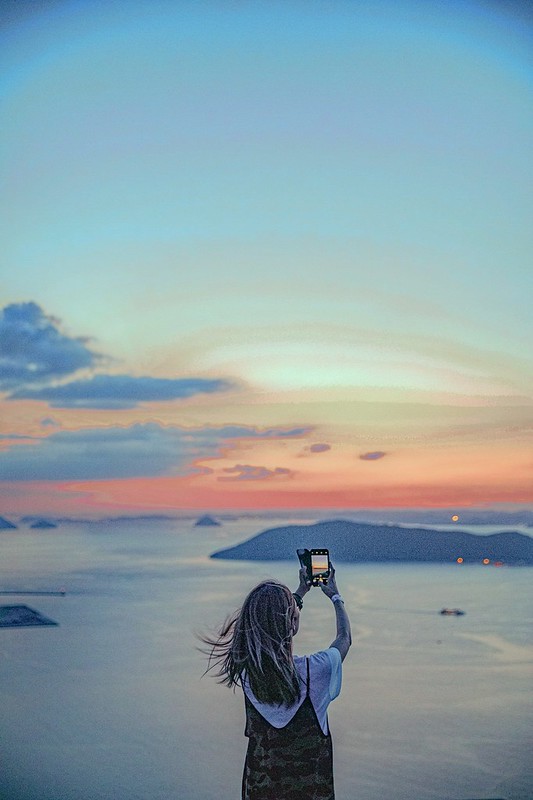
It was one of the times I hated to be a blogger. Because I will have to struggle between the dilemma of capturing the moment into my phone photo album, or into my heart and memory.
Do you know how fast the sun sets? Fast enough that you can’t really perform well at both.
Honestly, I just wanted to keep staring at the bright orange sun slowly going beyond the horizon and not think about which aperture or menu setting that will fetch me a photo with better likes on Instagram.

But yes, I am me. So yea. This is a photo of me. At Yashima.

You get the best of both worlds, on the left is the dazzling cityscape, and when you gaze over to the other side, you see small islands just floating peacefully in the sparkling water, so peaceful you can almost see them yawn for a nap.

If you are into history of Japan, Yashima is actually more than just a romantic sunset dating spot. It in fact, is said to have been the place that has shaped Japan’s history forever. This was where the final battle of the Taira and Minamoto clan, known as the “Genpei Battle”, took place, a thousand years ago. You may also want to visit Yashima Temple, the 84th temple of the 88 Temple Pilgrimage (八十八ヶ所巡り). (Maybe my next mission? haha.)
There’s even an aquarium!! It’s one of the rarest aquariums to be located on top of a mountain. Also, there’s a very exclusive ryokan near the observation deck, so imagine having this view from your room window. I couldn’t seem to find it but I’d so want to spend a night there!
EXPERIENCES
Udon Making
When in Kagawa, udon.
Sure, you eat lots of it, but how about making your very own udon?

Nakano Udon School offers udon-making experience, not just at an (overly) affordable price, but also make it super crazy fun(ny). The original school is in Kotohira, a small town outside of Takamatsu (I’ll blog about that!), but you can have the experience done right in Takamatsu city too.

So yes, here you learn how to make udon from scratch – from kneading the dough – with your hands then with your feet. Yes! You get to stomp on your udon – while dancing to PPAP!!! (You can watch it on my IG TV.)
I loved it. This cute obasan was cheering, singing and dancing throughout the whole experience. I don’t know where she gets all her energy from!!! Must be from the delicious Sanuki noodles huh!

You then slice your dough after rounds of sweaty dancing.

It says “I made this udon”.

And then you boil your own udon while the staff serve you side dishes.
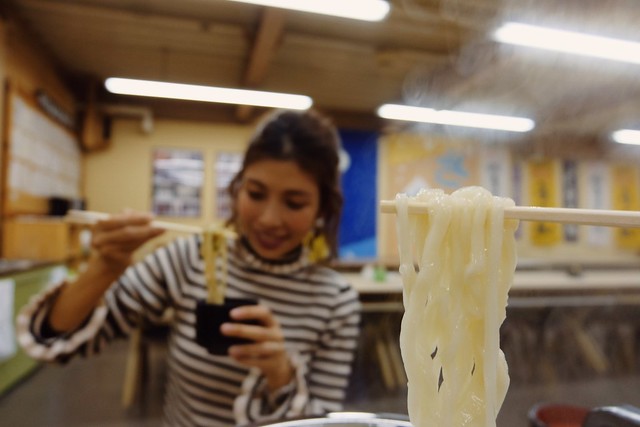
Mochi mochi, tsuru tsuru. Sorry there’s no English translation for this expression haha.

What a super simple (but not so simple now you know the energy and sweat needed behind it), super delicious meal.
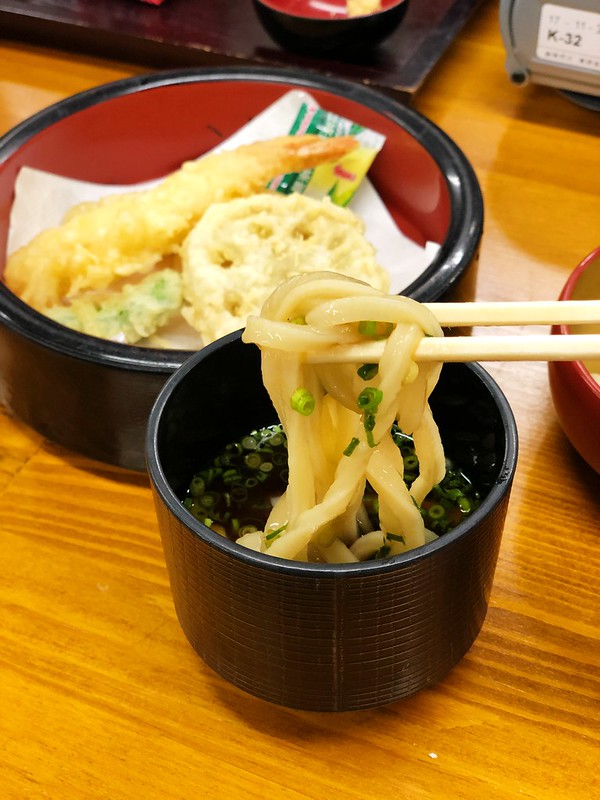
With lots and lots of negi.

And guess how much this experience costs?
JPY1500.
Ridiculous???? So much entertainment, so much delicious udon-making and secret sharing, a hearty meal of the very udon you just freshly made, you even receive a scroll as a certificate and the stick that holds the scroll can even be used as a roller for the dough! All for 1500 yen. If it’s a group of 15 people and above, it is even cheaper, apparently.
I am so humbled by how conscientiously Japanese people charge their customers. They don’t take advantage of your tourist status or your lack of understanding on foreign currency market rate. I have never ever felt that I was in the position of a tourist trap victim when I traveled in Japan (except at some overly popular food markets and China town in Kobe lol then maybe juuuust a little bit). This is why I love Japan more than anything in the world.
Mamehana Japanese Sweets Making

Inside a rustic but stylish home-based studio is a sugar heaven. There are many types of sugar but to the Japanese, Wasanbon sugar is one of the most premium given its supremely fine texture.
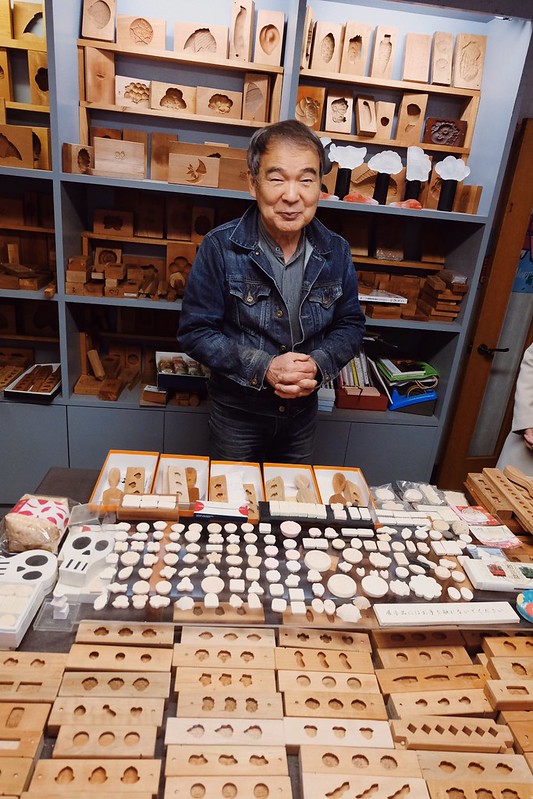
Ichihara Yoshihiro is the only artisan left in Shikoku to handcraft his wooden moulds for traditional wasanbon making. He is a quirky man of character with sometimes too many a joke that may not get any chuckle (and if any, awkward smiles).

Doesn’t it look just like him?

These are the real samples of the Wasanbon made from various molds handmade by Ichihara san. I tried asking him why none were eaten by ants and I didn’t get a real answer (“because ants have weak legs”, yeap, of course).

This is the official Japan tax-free shopping ad and he made the wasanbon sweets in the photo!

Making my own Wasanbon!

There are lots of cute designs you can choose and you can even eat it fresh served with a bowl of matcha!

Mix and match the sugar powder for more creative designs.
You can tapao your masterpieces back home of course, but I strongly recommend you to try at least one on the spot because – it will simply be the one and only experience you will ever have – tasting freshly made wasanbon sweet.
It just… melts… into fine morsels of sweetness…

I went back the second time this summer and tried their Wagashi making.

Using larger molds, you can create adorable-looking traditional Japanese sweets with white bean paste in it.

It was really fun!

And of course, very Instagenic and perfect for an afternoon sweet snack too.
Now, price, right?
Yeap. The whole workshop, including all the ingredients, experience, knowledge-share, and free sweets and free hot matcha, cost…
Are you ready?
JPY1000.
Yeap. Just slightly over 10 dollars. I mean, a matcha latte in a fancy cafe probably cost more than that…
What the hell, Japan? Can you please????
The sweet lady (pun optional) who conducted the workshop, Ichihara san, is the daughter of, of course, Ichihara san. I think that she tries very hard to preserve this very precious tradition passed down from many generations ago. Her workshop is not for profit, but rather, to spread the love and pride of what her father has been so passionately doing for decades.
That’s why I love Japan.
Grass Skiing, Sanuki Airport Park
Wait what? @.@
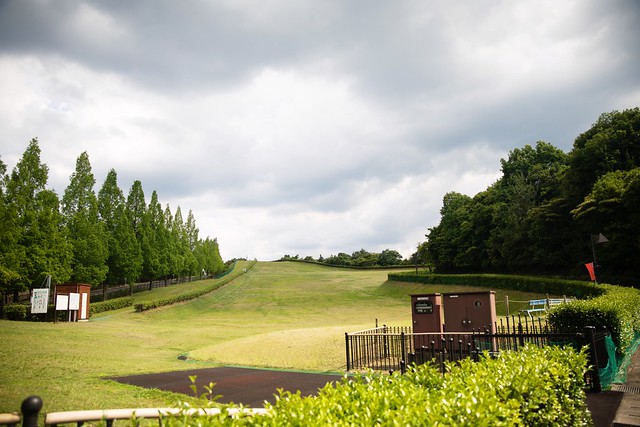
We’re gonna go skiing, right here!
That’s right. Many people including me have not heard of this before, but you can actually ski in summer time! Yes, ski lovers rejoice, now you can practice you skill all year round. And grass skiing is originally created for the purpose of Alpine ski training during off season!

I have personally tried it (and of course, rolled over many times given my zero talent in any form of sports haha), and I think it is something in between actually skiing and roller blading.

My very kakkoii coach!

Since there’s no need to rent full ski gear compared to winter ski, this is also a very affordable alternative to enjoying going speedily down the slope.
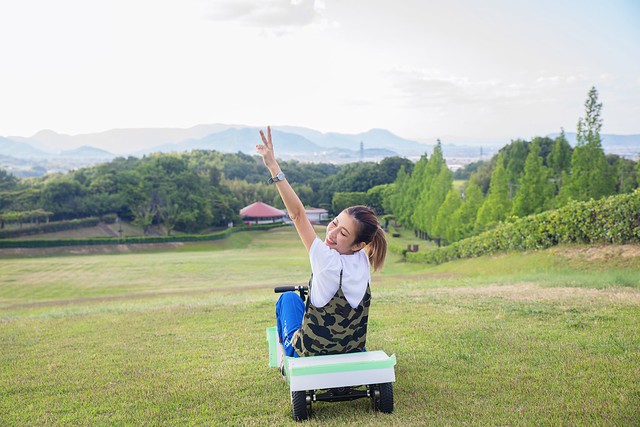
There’s also a sled for the less adventurous younger ones!
FOOD
Sanuki Udon

If you are not making your own udon, at least eat some udon.
If you don’t already know, there are many types of udon in Japan, depending on the region. Sanuki is the most famous, the mother of all udon haha. It’s actually so famous that Kagawa’s synonym is “Udon Prefecture”.
(Other famous udon includes Akita’s Inaniwa Udon, and Nagasaki’s Goto Udon, which are thinner compared to Sanuki.)

Ueharaya Honten is one of the most popular among local, and this canteen-style original udon restaurant feeds the many working crowd over a quick lunch time at as low as just JPY220 (S$2.70!!! Cheaper than mee bok!) for a bowl of plain kakeudon!!!
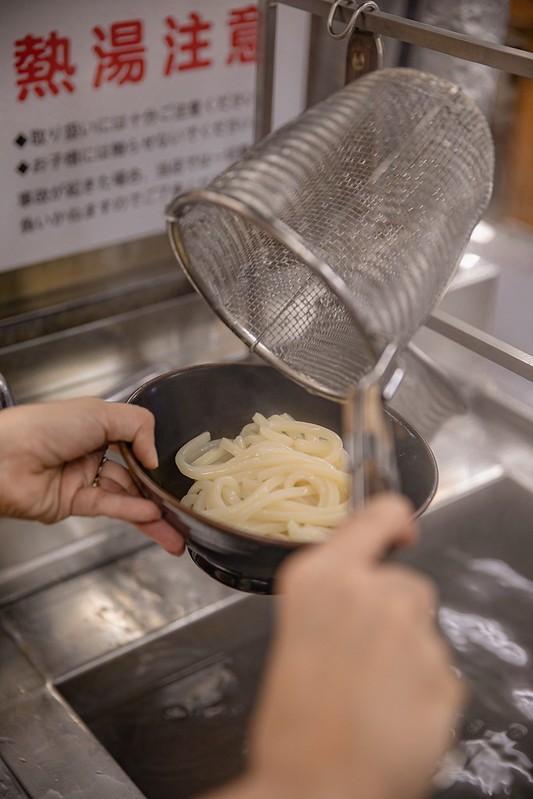
The fun (or not so fun?) part of it is that you get to blanch your own noodle like your regular bak chor mee hawker stall aunty.

And pour however much dashi stock over your udon.

My favorite part is the free topping omg. INFINITE NEGI HELLO??? FOR 220 YEN HELLO??? Please take more of my money, Japan, will you???

Of course, if you feel like indulging, feel free to add as many of those freshly deep-fried assorted tempura as your stomach allows, they have so many varieties including some I have not even heard before.
We kiasu Singaporean team had our udon and like 183782 other side dishes, and our Japanese coordinator burst out laughing and said that it is almost unheard of for a local to order an udon set over 1000 yen. That’s like anniversary luxury HAHA.
Also, you know what totally won my heart?

O-freaking-den.
Yeap. No matter the season, even in summer, Ueharaya has an oden station T___T.
Muriyari putting it on your must-go list if budget is yoru way to go, but do expect a line at lunch hour.
Bone Chicken
Another local Kagawa delicacy is none other than Honetsuki-dori, literally “Bone-attached chicken”, and considering how convenience is the top priority for Japanese people (even crabs are peeled for the customer’s comfort!!!), I find it kind of rare that you will actually have to put in some effort and get your hands dirty eating this juicy bone chicken.

We went to “Yoridori Midori”, arguably the most famost Bone chicken here in Kagawa, located at the very center of the shopping district in Takamatsu city.

There are actually two types of chicken thigh you can choose from, and the difference is the age of the chicken – “old hen” or “young chick” lol. It sounds kinda strange and it’s totally personal preference. The “young chicken” is juicy, tender and simple in flavor, while the “old chicken” may not sound as appealing, it has a firmer texture, and richer flavor and a a lingering aftertaste full of umami. Kinda like women, I think the men will argue? HAHAHA.
I think I liked both. The mature chicken had a taste akin that of our “kampung chicken”, lean and chewy. While the young chicken was more plain but oh very juicy.

This is another izayaka, also serve bone-chicken but with a lot more menu selection.

Chicken skin skewer in shio (salt) and tare (sauce).
Nagara – Organic Western Dining
Ok this is a gem so hidden I couldn’t even located it on Google search. If you really wanna visit, you can google “乍 nagara 高松”, or stalk their rather non-food related FB page.

That’s the thing about Japan. A cafe can look as stylish as this, and serve top-notch, kickass-unforgettable food.
The concept is Italian/spanish/western/fusion?? I don’t care. I enjoyed every. single. dish served to us that day.

1. sliced baguette with egg mayo dip – SO GOOD.
There’s also the mozarella tomato salad served with seasonal fruits, and ichigo was in season. Honestly? I hate fruits in my savory food. I don’t know how many times I had to insist. Orange peel whatever berry sauce nonsense on steak, even pineapple on pizzas is unacceptable haha. But this. I don’t know. Was it the scientific gastronomical balance of it? Was it because it’s less of a “savory” dish – almost bordering a dessert? I don’t know but it was SO GOOD. I wanted to lick the plate.
The other dish in this photo is the avocado octopus. Pales in comparison to the former two.
2. Big, fat asparagus topped with shaved parmesan. SO GOOD WTH? Maybe I was just hungry? I really couldn’t stop eating.
3. Chicken gizzard ajillo. What the hell, the texture. Ok the only time I eat gizzard is at Yakitori restaurants, and the only memory I have of gizzards are they being sort of chewy-crunchy. Not my favorite, but I don’t dislike them. But this gizzard was like nothing I’ve tasted before?!?!??! IT WAS SO SOFT AND TENDER LIKE… I don’t even. I asked the chef about his secret, bewildered and he smiled shyly but generously replied that it was because he simmered it on extreme low heat in oil for a long period of time.
4. The last dish was roast pork with young seasonal corn. The roast pork was also shockingly tender lol, but not overly fatty. Overall it’s just a really damn good meal and I don’t even write so much about food so this is really a lot to say for one photo.
So yea. Totally recommended, #cheesieapproved.
ACCOMMODATION
Setouchi Stay Kitahama Sumiyoshi
We had been staying in either ryokan or business hotel for the entire Shikoku trip, but this was the first “homestay”.

Tucked in the fashionable alley near Takamatsu harbour (where the red lighthouse is), Kitahama Sumiyoshi (北浜住吉) is an old home converted into a stylish guest house.
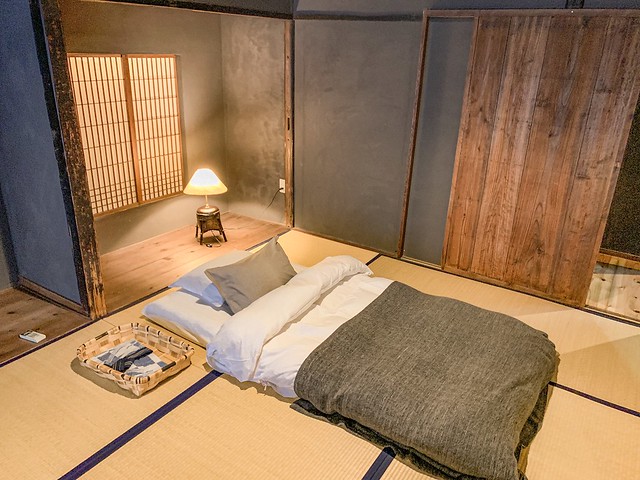
My futon. The home has two very spacious rooms so it should accommodate a big family. You get all the privacy, while no dinner is served like what a traditional ryokan does, the location is not too far from city center so you will have no worries about dining. Simple breakfast (bread, coffee, fruits) is provided at the pantry, help yourself when you wake the next morning!

Kagawa is well known for its artsy vibe. And Kitahama Alley is definitely your kind of thing if you love artsy stuff. It was originally an alley full of abandoned warehouse now converted into a creative art village.

When I was told that this “book store” sells only photography books, I typed an exaggerated jaw-drop emoji in my mind.
How do they even survive? I asked, unabashed.
Really? People read photography books these days? While I glue my eyes to my iPhone screen frantically trying to figure out what each button in the meitu app does to your cheekbone??? What kind of world am I missing out????
Our guide told us that don’t be surprised that it’s actually doing so extremely well!

There are even people migrating to Takamatsu from other parts of Japan just because they love the art community so much. Of course it makes sense. Creative people belong together to make greater things!
SHOPPING
The final and not any less important itinerary – shopping.
The shopping arcade in Takamatsu is the longest in Japan, I was told. Anyway, every prefecture tells me that theirs is the longest so.
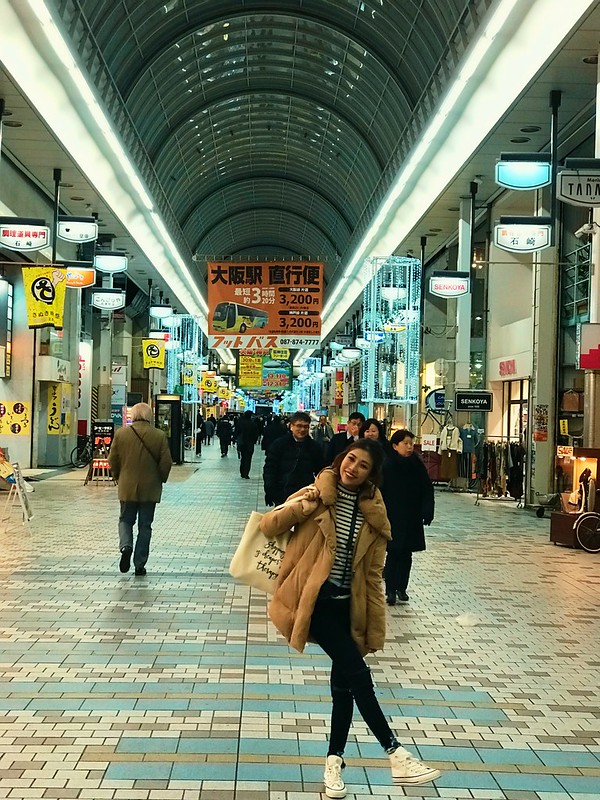
Alright I know already. This is the longest “covered arcade”, whereas Tenjinbashisuji arcade in Osaka is…… not? I guess??
You know what? Never mind. Everyone wins alright. :)) I don’t care, just give me good shopping!! 😀

While you’re at it try having your InstaBF or InstaBFF lie down on the ground and take an Instagenic shot of the arcade dome.
Totally worth it. (… or not.)
That’s Takamatsu for you!
Guess what? I cannot stop. Kagawa is not done yet. Wait for next!
If you are planning to explore Shikoku, here are the package tour and self-drive tour offered by CTC and HIS Singapore:


